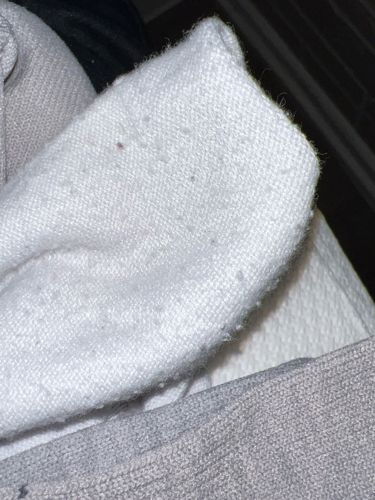Carpet Beetle (likely Varied Carpet Beetle or Black Carpet Beetle)
Scientific Name: Varied Carpet Beetle (Anthrenus verbasci) or Black Carpet Beetle (Attagenus unicolor) are common species, but specific identification requires closer examination.
Order & Family: Order: Coleoptera, Family: Dermestidae
Size: Larvae range from 1 mm to 5 mm (0.04 to 0.2 inches); Adults are typically 2 mm to 4 mm (0.08 to 0.16 inches) long.

Natural Habitat
Indoors, carpet beetles are common pests in homes, museums, and warehouses. They thrive in areas with natural fibers, pet hair, and lint accumulation, such as carpets, rugs, upholstered furniture, clothing, and stored food items. Outdoors, adults can be found on flowers.
Diet & Feeding
Carpet beetle larvae feed on a wide range of animal products, including wool, silk, feathers, leather, furs, pet hair, lint, dried meats, museum specimens, and even spices. They do not feed on synthetic fibers but may infest items made of natural fibers. Adults feed on pollen and nectar.
Behavior Patterns
Carpet beetle larvae prefer dark, undisturbed areas. They are often found in closets, attics, under furniture, or in cracks and crevices where lint, pet hair, and food debris accumulate. Adults are attracted to light and may be found near windows. The life cycle from egg to adult can take several months to a year, depending on environmental conditions and food availability. Larvae molt multiple times and are the destructive stage.
Risks & Benefits
Risks: Carpet beetles are significant household and museum pests. Their larvae can cause considerable damage to natural fiber products like wool clothing, carpets, upholstered furniture, furs, and stored foods. They do not bite humans or transmit diseases, but some people may experience skin irritation or allergic reactions to their bristly hairs. Benefits: In nature, they play a role in decomposition by consuming animal remains.
Identified on: 9/2/2025